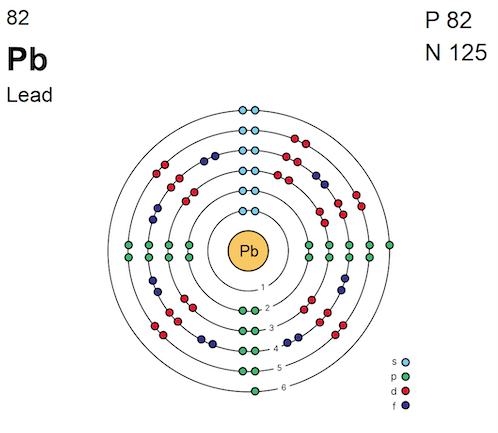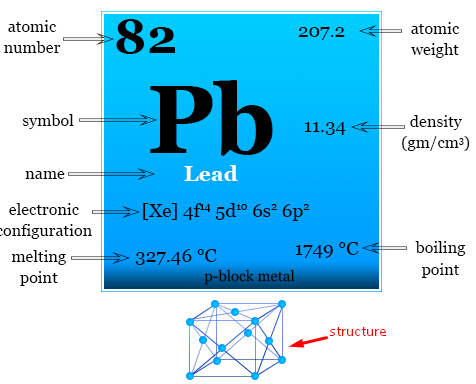Is Lead a Magnetic Metal? Discovering the Reality
To determine if lead magnetic or not, it is important that one considers the composition of the atom and how it behaves when subjected to a magnetic field. When people ask the question “is lead a magnetic material?” it seems simple enough; the answer, however, takes a deeper viewing into the field of magnetism and material science. Now, let us delve deeper into the magnetic characteristics of leads.
Table of Contents
ToggleBohr Model for Lead
The Bohr model for lead states that lead has atomic number 82; this qualifies it to be among the heavy metals.

The geometry is also instrumental on defining its potential magnetic characteristics. Filled 6s and 6p orbitals for the atom indicate that the electrons present are all paired, making the atomic magnetic moment equal to zero.

Understanding Diamagnetism
Diamagnetic Elements
Diamagnetic elements, such as lead, located all their electron pairs. This means that there is no net magnetic moment in the atom due to the pairing of the two electrons. When some of these materials are placed in an external magnetic field, they produce an opposing field. This leads to a weak repulsion.
Are Diamagnetic Materials Attracted to Magnets?
In short, diamagnetic materials show zero/negligible attraction towards magnets. Instead, these materials show repulsion when come closer to one another.
Is Lead Diamagnetic?
Why Does Lead Exhibit Diamagnetism?
Lead is diamagnetic due to its stable electron configuration with no unpaired electrons in its 6p and 6s orbitals. In these orbitals, the paired electrons form opposit magnetic moments which oppose each other thus cancelling each other out. In the event that an external magnetic field is applied, the two electrons in these orbitals will move in opposite directions. This produces a small counter magnetic field, which gives rise to weak repulsive force.
Magnetic permeability defines the ease to magnetize a particular material through the action of an external magnetic field. Lead is diamagnetic, which makes it repel a magnetic field. This indicates that it will weakly reject the applied magnetic field as opposed to other classes of metal such as ferromagnetic and paramagnetic metals that possess positive magnetic permeability and consequently attract magnetic field.
Does Lead Stick to a Magnet?
Experimental Evidence
If you put a chunk of lead next to a magnet pick up tool, you will notice that the lead does not adhere. This behavior is also consistent with its diamagnetic material status. The weak repulsion due to the induced magnetic field is not felt under normal circumstances but can be detected with the help of fairly sensitive instruments. Many experiments have been carried out by scientists in order to illustrate this magnetic lead property. This absence of attraction proves that it is a diamagnetic substance.
Practical Observations
As you will discover in real-life scenarios, lead does not stick to magnets. This property makes it applicable in many fields where non magnetic materials are needed. For instance, in shielding applications, the absence of magnetism in the lead means that the substance will not affect magnetic fields. In normal circumstances, Lead’s actions support that it is not magnetic at all. In construction applications, plumbing, or radiation shielding, one cannot underestimate the benefits that come with lead’s diamagnetic nature.
Guess if you like to know can you pick up brass with a magnet?
Impact of Impurities on Lead Magnetism Properties
Ferromagnetic Contaminants – Is lead Ferromagnetic?
The magnetic leads behavior highly depends on alloying, especially with ferromagnetic materials like iron or nickel. These impurities generate unpaired electrons which in turn result in a net magnetic moment. However, when lead is mixed with these ferromagnetic elements, its diamagnetic properties are minimized and it can be slightly magnetic.
Alloying Lead
Another factor which greatly affects the answer to “is lead attracted to magnets” is if lead is mixed with ferromagnetic or paramagnetic materials, the properties of the formed alloy may have different characteristics. The lead can thus interact with these magnetic impurities to cause partial alignment of magnetic moments to create this magnetic effect in the alloy. This allow you to experience partial lead magnetism. For instance, the addition of small amounts of iron or nickel to lead makes the alloys weakly magnetic. This process involves the shuffling of atoms and electrons and an acquisition of new magnetic characteristics. It is to be noted that the level of magnetism in these alloys depends on the purity and composition of materials used.
Special Conditions Affecting Lead’s Magnetism
When answering will a magnet stick to lead, these conditions possess greater influence:
Extreme Temperatures
When the temperatures are low, lead can conduct electricity with no resistance and also push out magnetic fields, a quality known as superconductivity. In this state, lead can behave like a magnetic material for a while, but this does not have any practical use. Lead is superconductive at temperatures that are just above absolute zero temperature and is thus of importance in advanced physics and material science.
Strong Magnetic Fields
Lead can be given a temporary magnetic field by passing a very strong magnetic field through it. Although this effect is marginal and can be observed only under conditions not usually met in practice.
The element lead was also discovered in laboratory experiments to exhibit very slight magnetic properties when placed within strong magnetic fields. But the overall effect is negligible. However, lead is not considered as magnetic in all practical applications.
Applications and Implications
Lead in Industry
Because of its non-magnetic characteristic, Lead has many uses in industries. For example, in radiation shielding, the density and the non-magnetic nature of lead means it does not affect magnetic fields in sensitive equipment. It is utilized in medical imaging rooms, nuclear power plants, and other areas that require guarding against radiation.
Safety Considerations
Lead, on the other hand, though is non-magnetic, is toxic and thus should be handled carefully for its detrimental effects on health. There are safety measures and regulations that should be taken to avoid lead poisoning. Pb exposure produces adverse health effects ranging from neurological disorders, and these effects are worse in children. In this case, industries using lead must ensure that they adhere to specific safety measures to prevent the adverse effects on workers and the environment.
Conclusion
In summary the simple answer to “Does a magnet stick to lead?” is no. Lead have diamagnetic character due to electron arrangements and do not have strong reactions with magnetic fields. Lead does not attract magnets and cannot retain a magnetic field as ferromagnetic and paramagnetic materials do. Knowledge of lead’s magnetic characteristics is useful in many fields and scientific endeavours. Further research on is lead magnetic or nonmagnetic could result in new technologies in the future.
If you like the above article also read is zinc magnetic?




One Response